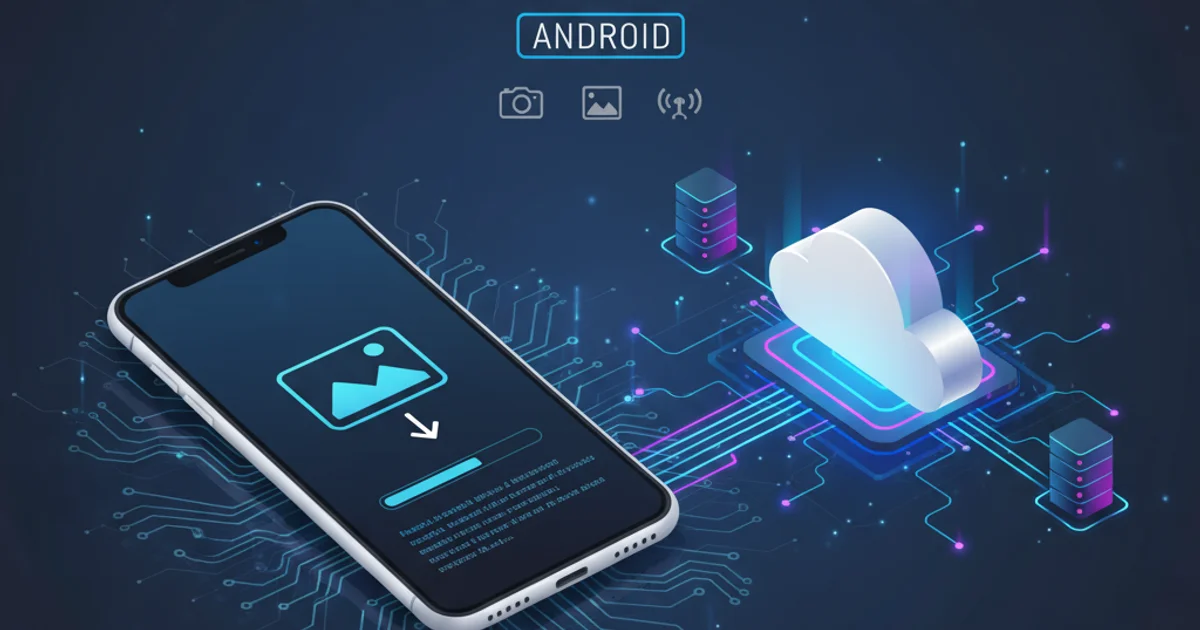Byte[] to InputStream or OutputStream
Categories:
Converting Byte Arrays to Input/Output Streams in Java

Learn how to efficiently convert byte[] to InputStream and OutputStream in Java, covering common use cases and best practices for data handling.
In Java, byte[] (byte array) is a fundamental data structure for handling raw binary data. Often, you'll need to interact with APIs or libraries that expect an InputStream for reading data or an OutputStream for writing data. This article explores the common and efficient ways to convert between byte[] and these stream types, providing practical examples and considerations for different scenarios.
Converting byte[] to InputStream
Converting a byte[] to an InputStream is a common requirement when you have binary data in memory and need to feed it into a method that expects a stream. The ByteArrayInputStream class is specifically designed for this purpose, providing a simple and efficient way to wrap a byte array as an input stream.
import java.io.ByteArrayInputStream;
import java.io.IOException;
import java.io.InputStream;
public class ByteArrayToInputStream {
public static void main(String[] args) {
// Sample byte array
byte[] data = "Hello, World!".getBytes();
// Convert byte[] to InputStream
try (InputStream is = new ByteArrayInputStream(data)) {
int byteRead;
StringBuilder sb = new StringBuilder();
while ((byteRead = is.read()) != -1) {
sb.append((char) byteRead);
}
System.out.println("Read from InputStream: " + sb.toString());
} catch (IOException e) {
e.printStackTrace();
}
}
}
Example of converting a byte[] to InputStream using ByteArrayInputStream.
try-with-resources statement when working with streams to ensure they are properly closed, even though ByteArrayInputStream doesn't require explicit closing as it operates on an in-memory array.flowchart TD
A[Byte Array (byte[])] --> B{new ByteArrayInputStream(data)}
B --> C[InputStream]
C --> D[Read Data (e.g., API call)]
D --> E[Process Data]Flowchart illustrating the conversion of a byte array to an input stream.
Converting byte[] to OutputStream
While you cannot directly 'convert' a byte[] into an OutputStream in the same way you can with InputStream (as OutputStream is for writing data), you typically write the contents of a byte[] to an existing OutputStream. If your goal is to capture data written to an OutputStream into a byte[], you would use ByteArrayOutputStream.
import java.io.ByteArrayOutputStream;
import java.io.IOException;
import java.io.OutputStream;
public class ByteArrayToOutputStream {
public static void main(String[] args) {
// Scenario 1: Writing a byte[] to an existing OutputStream
byte[] sourceData = "Data to write".getBytes();
// Example: Writing to a ByteArrayOutputStream (which captures bytes)
try (ByteArrayOutputStream baos = new ByteArrayOutputStream()) {
baos.write(sourceData);
System.out.println("Bytes written to ByteArrayOutputStream. Size: " + baos.size());
// To get the byte[] back from ByteArrayOutputStream:
byte[] capturedData = baos.toByteArray();
System.out.println("Captured data: " + new String(capturedData));
} catch (IOException e) {
e.printStackTrace();
}
// Scenario 2: If you have an OutputStream and want to write a byte[] to it
// For demonstration, let's use System.out as an OutputStream
try (OutputStream os = System.out) {
byte[] message = "Writing directly to an OutputStream.\n".getBytes();
os.write(message);
os.flush(); // Ensure data is pushed out
} catch (IOException e) {
e.printStackTrace();
}
}
}
Examples demonstrating writing a byte[] to an OutputStream and capturing OutputStream data into a byte[].
ByteArrayOutputStream is particularly useful when you need to build up binary data in memory and then retrieve it as a single byte[] or write it to another stream.flowchart TD
A[Byte Array (byte[])] --> B{OutputStream.write(data)}
B --> C[OutputStream (e.g., FileOutputStream, SocketOutputStream)]
C --> D[Destination (e.g., File, Network)]
subgraph Capturing Output
E[Data Source] --> F{Write to ByteArrayOutputStream}
F --> G[ByteArrayOutputStream]
G --> H{toByteArray()}
H --> I[Resulting Byte Array (byte[])]
endDiagram showing writing a byte array to an output stream and capturing output into a byte array.
Best Practices and Considerations
When working with byte[], InputStream, and OutputStream, keep the following in mind to ensure efficient and robust code:
- Resource Management: Always close streams, especially file or network streams, to prevent resource leaks.
try-with-resourcesis the preferred method. - Performance: For very large byte arrays, repeatedly converting to and from streams might incur overhead. Consider processing data in chunks if memory is a concern.
- Thread Safety:
ByteArrayInputStreamandByteArrayOutputStreamare generally not thread-safe if multiple threads are accessing the same instance concurrently without external synchronization. - Encoding: When converting between
Stringandbyte[], always specify the character encoding (e.g.,"UTF-8") to avoid platform-dependent issues and data corruption.